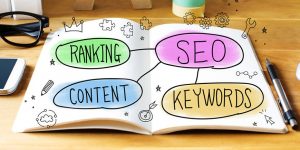It might be almost 2024, but content is still king for businesses hoping to reach, attract, and convert their ideal clients. However, since the pandemic, what customers want has changed dramatically.
Yes, they still want great content at each stage of the sales funnel to help them make buying decisions. But they increasingly want to be able to contact businesses at any time of the day or night and by their preferred channel, whether that’s by social media (including private messaging and public comments), SMS, phone, chat, or any other preference they might have.
Not only that, but they want answers “now” whenever that happens to be for them, and they want a quality customer experience with it, right from first contact, through investigating their purchase, to buying and after-sales service.
Everything must be frictionless, easy, clear, and smooth from start to finish, or we can guarantee you are losing customers.
It’s easy to say all that, but not so easy to do it for many businesses. The businesses that thrived during the pandemic were the ones that could pivot and adapt to changing customer demands and to the way they wanted content delivered, when, and why.
According to Bynder’s State of Content Report 2023, “In 2023, content retains its leading position in the world of marketing…Many companies are struggling to meet the needs of today’s marketplace — including evolving consumer buying habits and their demand for a seamless digital content experience.
However, CMOs are realizing that prioritizing digital transformation efforts and investing in an integrated digital ecosystem that supports content operations will make their business more resilient, responsive to changes in the market, and competitive.”
And that brings us neatly onto composable content. With companies such as Gartner (who coined the term) talking about composable business and evaluating the best of the composable content and digital experience platform (DXP) companies, then this is clearly not something that’s going away any time soon.
But what is composable content? How does it work, and what are the advantages?
What is Composable Content?
Time was when the marketing department would create content on their own software, and until the copy was used in ads, on the website, and for general marketing efforts, no one else would see that content or be able to use it.
There would likely be different software in the documentation department, sales, product development, engineering, and other departments, and none of this software would talk to any other software.
Content would be written in each department, but it was siloed and not shared across the company, where anyone could quickly pick it up and use it.
With composable content, however, a composable content platform can collate every type and format of content in one place, integrating with legacy software via API to allow this.
Instead of storing whole manuals, for example, content is broken down into blocks to be quickly used wherever needed, without needing to copy and paste. You can break your content down into images, tests, product descriptions, SKUs, prices, blocks of reusable text, safety data sheets, and so much more.
Orchestrating Dynamic Experiences with Composable Content
Users from every department can then use content blocks to quickly put together a product information sheet, incorporating quality images, the product description, product details, a data sheet, and anything else that would be helpful to the internal or external customer it’s being created for.
You can quickly create microsites, full websites, manuals, instructions, marketing materials, ad copy, and so much more from the content you already have. And there’s no need to spend any time learning or using code. Nor do you need to spend hours searching for the content you need or copying and pasting from one document to another.
This is rapid, seamless, smooth content creation, enabling anyone who needs it across your business to create new, helpful content that’s more personalized and tailored to the end customer than ever before.
API-Accessibility: Fostering Collaboration in Content Creation
APIs allow other platforms to integrate with other systems. While you may have invested in a new digital experience platform, that doesn’t mean you’ll want to completely dispose of any legacy software you already own.
Instead, quality DXPs allow for integration with most existing software so that you can have the best of both worlds. You can still keep and use the software you’re already used to but can add extra DXP functionality on top.
We talked earlier about siloed content, where each department creates its own content but never shares it with other departments. This is one place where composable content, along with API accessibility, can help.
With all your content collected in one place, it’s far easier to see what you’ve already got and for each department to select and use existing content from other departments. It can be eye-opening to see just how much duplicate content you might have built up, purely from departments working on their own without communicating with each other.
Once people begin to see what content you have, it is far easier to then spot gaps and discuss new ideas for content and new uses for existing content with other departments. This can only be a good thing. Siloed working is stifling creativity.
It reduces the flow of ideas and the need and impetus to speak to people outside your own department. It can also lead to a “them vs us” mentality, which is not healthy for any business.
People can more easily communicate between teams and departments and come up with new and better ideas for content to move the business forward.
Structured Content Mastery: Building Blocks for Versatile Experiences
“We now have essentially a box of Lego blocks where we can create rich content pages quickly and easily and enable our content team to lean into their creativity,” said Steve Goodwin, Lead Engineer at Top Villas.
That’s a great visual, isn’t it? We can immediately imagine stacking and adding different colors and shapes of Lego to create something new, and it’s just the same with your content when you have a composable content platform.
You can pull from different platforms, such as AutoCAD, to add in technical drawings, for example, or find images, PDFs, hooks, tag lines, ad copy, product descriptions, data sheets, and more to create a brochure, a technical manual, a user manual, a website knowledge base, or indeed, anything else your internal and external customers want or need.
It takes time to break your content down into usable, practical parts and to add a meta description to each one so that each piece of content can be easily searched for, but the time spent is worth it when users can quickly and easily pick and choose the right pieces of “Lego” to create what they want.
From that point, the platform becomes a massive time saver, enabling your people to create and personalize content for any type of customer at any stage of the sales funnel.
Composable Efficiency: Streamlining Content Creation Workflows
With a professional composable content platform, it’s far easier to get an overview of existing content, spot any gaps that need filling, and streamline workflows.
This software allows you to control who has access to what content, who can only view it, and who can fully edit. You can also ensure strict version control so that everyone is certain to be using the most up-to-date version of each piece of content. Not only that but when edits are made to one version of a piece of content, they are made everywhere that content is used.
This prevents the nightmare scenario of having to manually go through every document and website page to update a piece of information, such as the price.
With such control over your content and access management, it then becomes a far more straightforward matter to look at your workflows and to adapt and simplify them for ease of use and greater efficiency.
The Composable Advantage: Crafting Varied Experiences from Common Elements
Repurposing and reusing existing content has been talked about for years in the marketing space, but it’s never been more powerful and more easy to do.
With a content composer, you can change the style, font, and look of your content, quickly add it to further content to produce something new, and angle what you’re creating for new audiences.
A product description, for example, could become alt text for images to aid the blind or partially sighted. It could be part of a user manual, a social media ad, or a marketing brochure. It could be an answer to an FAQ, or a chatbot could pull that description to answer a customer’s question when you’re fast asleep at 3 am.
Or you could build an advanced maintenance manual for engineers by adding that product description along with setup instructions, troubleshooting instructions, diagrams, and exploded images for putting all the parts together, recycling information, wiring diagrams, parts lists, information on reordering spares, technical drawings, and quality images.
That same product description could be used by anyone and tailored to anyone, from an internal salesperson who wants to learn about what they’re selling to a customer who wants to buy, to documentation for building your manuals, your own installation engineer for setting your product up on site, or a maintenance engineer at your client’s company.
It might even form part of a report to your board of directors on your top-selling products.
The power of this type of platform to give your existing content endless flexibility and adaptability can’t be overstated.
Harnessing Composable Content for Efficiency: Advantages of Composable Content
We’re certain that by now, you can see more than a few advantages of using composable content, but we’ve also listed just some of the advantages below and just how much more efficient a composable content platform can be.
- No more hours wasted on search
With all your content together in one place and correctly labeled, it’s a simple matter to run a quick search and find the content you need for your next creation. No more spending hours searching manual files or old systems to find what you want.
- No repetition or duplicating of work
Unless someone doesn’t do a search first, there’ll be no more cases of the quality department writing a long description with images of how to build product X only to find that documentation already did that months ago. Or vice versa.
- Speed
Anyone with access will be able to quickly respond to new customer needs and turn out a quality piece of content that is exactly what the customer is looking for.
- Document control
No one wants to send an incorrect product description or, even worse, an out-of-date price list to a customer, and with firm control over content versions, that will never happen. You’ll always know that everyone in the company is using the same, up-to-date version of each piece of content.
- Interdepartmental working and communication
Seeing all of your available content together is guaranteed to spark ideas and conversations, and not just in between individual teams and departments. In order to make the most of this platform, people will have to talk to each other and swap ideas. And that means no more siloed teams and departments clutching onto their knowledge and not letting anyone else near it for a far more open and healthy business.
This platform really will save you time all around once it’s implemented and set up correctly, and it’s also likely to transform your business and create a feeling of community and sharing.
Choosing Wisely: Key Considerations for Your Composable Content Platform
While the functionality of a composable content platform sounds wonderful, you can’t simply abandon your legacy systems today and start with composable content tomorrow. You need to look carefully at what software you already have, which departments will make use of the new platform and how, what sort of platform you want to use, what will work best for the company, and, obviously, your budget.
You should also be aware that there will be a learning curve in changing from standard content creation to composable content, and that you’ll need to persuade some people of its usefulness and encourage buy-in across the company.
Points to bear in mind:
- Integration
Can the platform integrate fully with your legacy software so you can still make the most of what you have?
- Flexibility
Can your IT people bring in new software and retire older software as needed?
- Future proof
Is this platform future-proof? Can it be adapted and added to as needed?
- Cost vs value
It’s not just about how much your platform costs. It’s about how much value you’ll get out of it. Will your people really use it, and is the cost of it worth it compared to what it can do for your business?
- Demo
Always look at the demo for every platform you are considering. Take your time, and make sure you can ask all the questions you want.
- Support
What is support like for your new platform? What is in your service level agreement if you have one? Is it enough to cover you if something goes wrong so you can quickly get back up and running again?
Composable Content in Action: Real-world Examples and Success Stories
Some of the biggest names in business use a composable content platform to streamline their content marketing and aid customers, including BMW, DocuSign, and Samsung.
Here are just a couple of examples:
Samsung:
Samsung’s membership program started off life as mobile-only, but that did make it difficult to reach non-mobile customers. They did have an existing CMS, but it wasn’t capable of managing their content and sending it out to customers in the way that they wanted it to.
They wanted a solution that worked for their content team and the developers that allowed the developers to continue developing and adding features without making the content team wait for them before they could continue their work.
And so, they engaged Hygraph, which enabled the front-end developers to build the system and add new features as required. Also used Hygraph’s content modeling feature to work out their own structures and workflows for smooth working. Hygraph also has a good user interface, which customers were happy to use.
Once the new system was put in place, Samsung could reach all of their customers, even if they weren’t Samsung mobile users, and they also achieved around a 15% increase in their user engagement.
DocuSign:
When updating their website, DocuSign found that it took, on average, around two weeks to make an update. This was clearly far too slow and meant that information on the site wasn’t always the latest version. The content team had to wait for developers to be ready before they could update. With an old CMS, there were workflow problems, delays, lost time, and other issues.
DocuSign used Contentful to bring in a new platform, which was far easier to use. Website updates could now be done in only five minutes, with no need to wait for the developers. Workflows were smoothed and improved, and the content creation team could get back to what they did best – creating epic content to wow their customers.
Future-proofing with Composable Content: Evolving Digital Experiences
With a quality composable content platform, there are literally hundreds of APIs and adaptations to ensure that you can do exactly what you want with your system and continue to do it well into the future.
You can also look at adding other functionalities and keeping your platform up to date, enabling it to handle whatever changes happen in the marketing space and whatever customers begin to demand in customer experience in the future.
Summing Up the Power of Composable Content: Elevate Your Marketing Strategy
Bringing in a composable content platform can empower not just your marketing department and your strategy but your whole company.
When anyone from any department can quickly use the platform to produce the exact right information at the exact right time, your customers and potential customers are going to think that you’re mind readers who really do understand them and their needs.
In that case, who do you think they’ll choose? You, with your up-to-the-minute content that’s always accurate and timely, or your competitor who simply can’t keep up with you?
The power, flexibility, and efficiency of this software can’t be overstated. It really can become an investment that neither you nor your marketing strategy can live without.
Composable content can be an excellent asset to any company, but someone’s got to write and create all that content before it can be used across departments, teams, channels, formats, and more.
Rather than struggling to keep up, Writer Access can help you scale your content production with talented, professional writers covering a range of subjects and writing styles.
Why not get your hands on a 14-day trial of WriterAccess to see how we can help?









